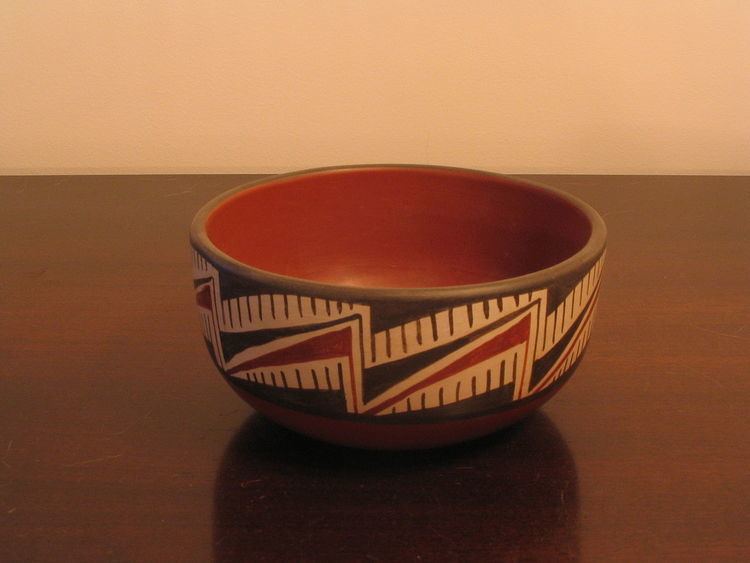 | ||
The Diaguita people are a group of South American indigenous people native to the Chilean Norte Chico and the Argentine Northwest. Western or Chilean Diaguitas lived mainly in the Transverse Valleys incised in a semi-arid environment. Eastern or Argentine Diaguitas lived in the provinces of La Rioja and Catamarca and part of the provinces of Salta, San Juan and Tucumán. The term Diaguita was first applied to peoples and archaeological cultures by Ricardo E. Latcham in early 20th century.
Contents
Ancient Diaguitas were not a unified people; the language or dialects used by them seems to have varied from valley to other valleys and they were politically fragmented into several chiefdoms. Coastal and inland Chilean Diaguitas traded as evidenced by the archaeological findings of mollusc shells in the upper course of Andean valleys.
According to the 2010 census there are 67,410 self-identified Diaguita descendants in Argentina.
Language
Early Spanish accounts, including Jerónimo de Vivar, claims the Diaguitas inhabiting the different Transverse Valleys spoke different "languages". Jesuits active in western Argentina also report a large number of "languages". For the Chilean Diaguitas scholar Herman Carvajal claims however that they could very well have spoken not different languages but different dialects. According to this hypothesis the main difference between dialects could have been in the lexicon.
Kakán was proposed by Rodolfo Schuller and Ricardo E. Latcham to be the single language of the Diaguitas. This proposal has been questioned but is accepted among others by Sergio Villalobos.
History
The origin of the Diaguita culture is traced back to an archaeological culture known as El Molle complex which existed from 300 to 700 CE. Later this culture was replaced in Chile by las Las Ánimas complex that developed between 800 and 1000 CE. It is from this last culture that the Archaeological Diaguita culture emerged around 1000 CE. The classical Diaguita period was characterized by advanced irrigation systems and by pottery painted in black, white and red.
It has been claimed that the Inca Empire expanded into Diaguita lands because of its mineral wealth. This hypothesis is currently under dispute. Another possibility is that the Incas invaded the relatively well-populated Eastern Diaguita valleys to obtain labor to send to Chilean mining districts. It is generally accepted that Diaguita incorporation into the Inca Empire was through warfare which caused a severe depopulation in the Transverse Valleys of Norte Chico. According to scholar Ana María Lorandi the Diaguitas, and specially the Calchaquí Diaguitas, would not have been conquered easily by the Inca Empire. Once conquered the eastern Diaguitas did not unanimously accepted Inca rule. The Incas appointed kurakas and established mitmas in the Chilean Diaguita lands. The Incas did also influence the Diaguitas who adopted pottery designs from Cuzco and Inca techniques in agriculture and metalworking.
The Chilean Diaguitas were conquered by Spaniards coming from Peru. The eastern Diaguitas lands were explored by Spaniards coming from Chile, Paraná River and Peru. The Spanish initially failed to conquer the fertile valleys inhabited by the Eastern Diaguitas and could only control the eastern valley ends. By founding the cities of Santiago del Estero (1550s), Tucumán (1565), Salta (1582), La Rioja (1591) and Jujuy (1593) the Spanish established an effective fence around the rebellious Eastern Diaguita valleys. To further dominate the Diaguitas the city of Londres was founded in 1607 in the middle of the Eastern Diaguita territory.
During the government of García Hurtado de Mendoza in Chile (1557–1561) Chilean Diaguitas that had rebelled were decimated by the Spanish. The Calchaquí Diaguitas of the eastern side of the Andes rose against Spanish rule in 1630 and the last rebels fought until 1642–1643. In this rebellion the Spanish city of La Rioja was close to be destroyed. The Calchaquí Diaguitas only entered Spanish rule after 1665.
